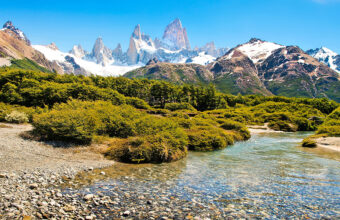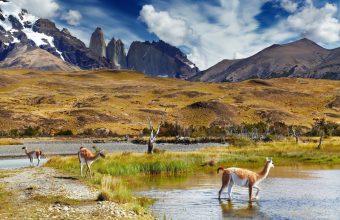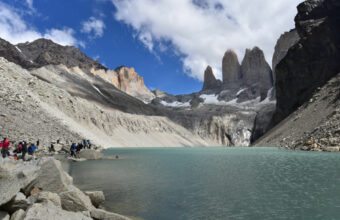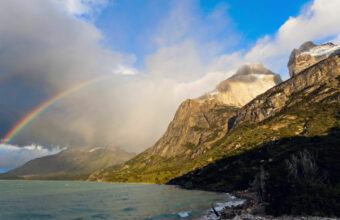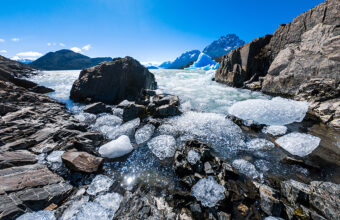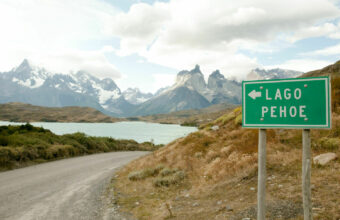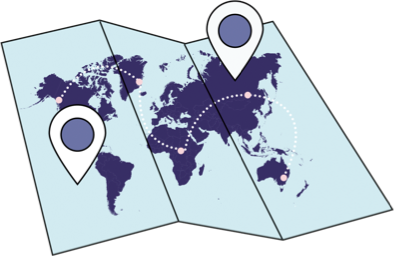Trekking in Torres Del Paine
Torres del Paine's best hiking routes and trails
Trekking in Torres del Paine offers some of the most sublimely beautiful scenery I’ve seen anywhere on the planet.
Most famously, the Full Circuit trek is a truly epic 10-day trek through soaring, spectacular mountains, studded with jewel-like lakes and edged with vast, creaking glaciers – and the shorter W route is almost as good.
I’ll never forget my first, jaw-dropping view of the Grey Glacier on the Torres Circuit – or the screaming winds on the pass above it. Trails are well established, and there are large well-equipped lodges along the trail – you can now do the whole of the W without needing to carry a tent (which certainly wasn’t the case when I first hiked it), but you’ll need to camp on a few stages along the northern part of the Circuit.
If such a remarkable place can have a downside, it would be that it’s become a victim of its own success: with a narrow tourism season and a buoyant tourism industry, Torres del Paine gets busy indeed.
Ready to go? Read on for my essential guide to trekking in Torres del Paine National Park.
featured torres del paine treks
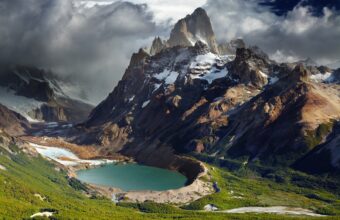

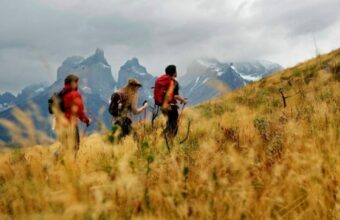
Torres del Paine O Trek
The famous Full Circuit trek plus Perito Moreno
14 days From $3,260 ppThe best treks in Torres del Paine
Popular – and lesser known – treks
If you're coming all this way, I highly recommend going all-in and doing the Full Circuit (otherwise known as the 'O Circuit'). It's more remote, less crowded than the W, with views that are even more epic in scale. There's a reason it regularly tops lists of the world's greatest treks.
-
Torres del Paine National Park
View trips -
Torres del Paine National Park
View trips -
Torres del Paine National Park
View trips -
Torres del Paine National Park
View trips -
Torres del Paine National Park
View trips -
Torres del Paine National Park
View trips
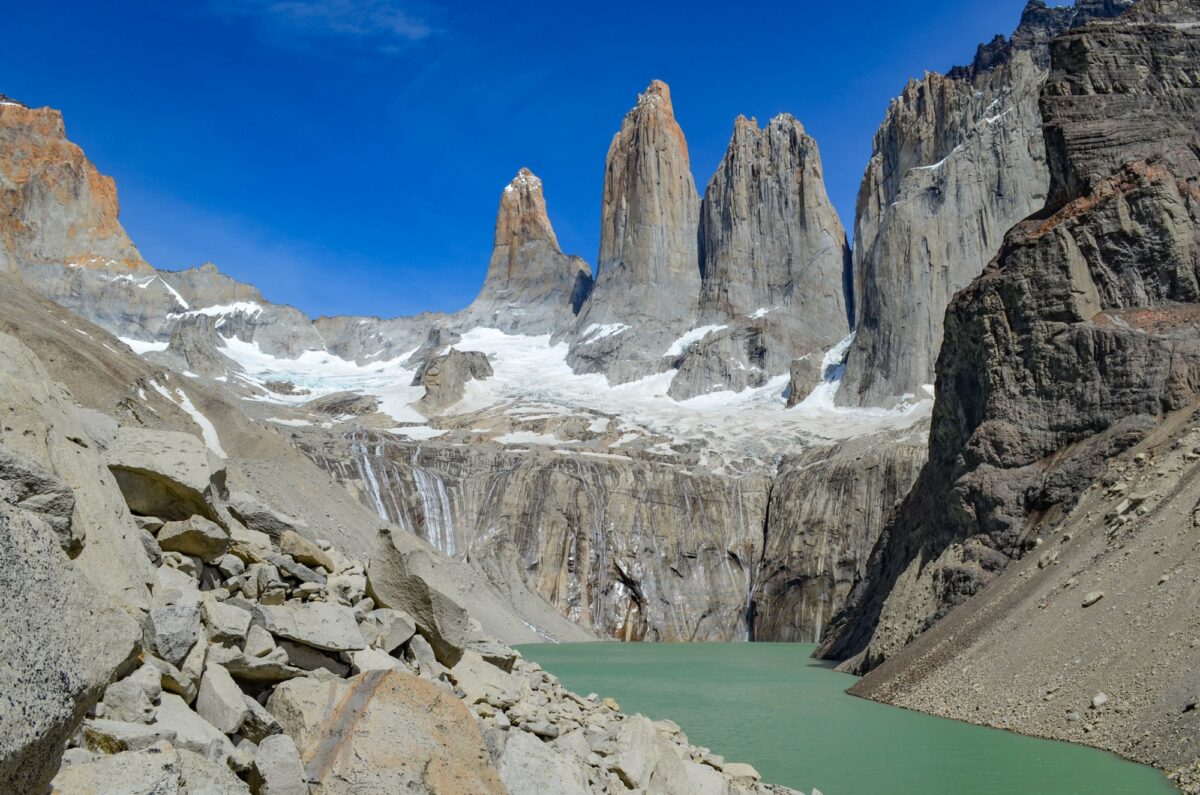
The iconic Mirador Las Torres, one of Torres del Paine's classic hikes
Trekking in Torres del Paine
Everything you wish you’d known before you booked
Booking made simpler
Booking made simpler
The mandatory booking system in Torres del Paine means that you need to book and pay for all lodges (run by two different companies) and campsites, as well as your national park entry fee online, on three different websites. This is a rather different picture from when I first hiked in the park over 15 years ago, at which time you could still just turn up without booking anything in advance. Booking an organised Torres del Paine trek will make all these headaches go away.
Alternatives to Torres del Paine
Yes, Torres del Paine is an amazing place – but it’s not the be all and end all of hiking in Patagonia. The Mt Fitzroy area around Argentina’s Los Glaciares National Park is every bit as beautiful, and less crowded. It’s excellent when done as a multi-day trek with a tent – which means you’ll get to experience sunrise at Laguna Torre (facing the slender spire of Cerro Torre) and Laguna de los Tres (below Mt Fitzroy). For my money this is the finest trek in Patagonia.
Carry a water filter
Supporting tourism in such a remote part of the world takes considerable resources: virtually everything you need has to be shipped in and the environmental impact is significant. One small but important thing you can do is to carry a water filter, and not buy bottled water. I always carry a small filter. A Peak Series Collapsible Squeeze Filter from LifeStraw for example weighs next to nothing, takes up hardly any space in your pack, and means you can fill up water pretty much whenever you need along the trail. Not to mention preventing a large number of plastic bottles potentially ending up in landfill.
Be prepared for all weather
If you manage to go on a hiking trip to Patagonia without at least one day of rain or screaming winds (I certainly haven’t), you probably deserve a special prize. Make sure you carry suitable waterproof and warm clothing.
Torres del Paine trekking FAQs
Your questions, our expert answers
Question
Do you recommend the W or the Circuit or something else?
Answer
For me it’s the Circuit which eclipses pretty much anything else in Torres del Paine National Park – it’s more remote, less crowded than the W, with views that are even more epic in scale. Not for nothing is it often described as one of the world’s truly great treks. However I also really love the Fitzroy area in Argentina, where the scenery is every bit as amazing, and where unlike Torres del Paine the national park has not allowed the construction of lodges (let alone luxury hotels), meaning overnights are restricted to well maintained campsites. For my money, that gives the place a much more unspoilt and untouched feel.
Question
Which direction should I walk?
Answer
The Circuit can only be walked in an anticlockwise direction. The W can be hiked in either direction, and which you chose will dictate whether you’re hiking against or with a lot of the other hiking traffic. I prefer east to west for the W, which means in the opposite direction from those on the Circuit, and because Glacier Grey arguably makes the best finale.
Question
Can you trek without a guide in Torres del Paine?
Answer
The W and the Circuit as well as the shorter walks in Torres del Paine National Park are well-known and well-used, the routes are well marked, and you’ll find plenty of other hikers on the trail – so yes, hiking independently is fine. I’ve hiked independently on the treks listed above. Whether you go solo or with one or more hikers is up to you and depends on your level of confidence – the northern part of the Circuit is quite remote, for example. If you’re camping, hiking with one or more other people allows you to share the weight of a tent, food and other camping equipment.
Question
Do I have to book Torres del Paine campsites in advance?
Answer
Booking is mandatory for Torres del Paine. You can only hike the W or the Circuit of you have all accommodation booked in advance (and it gets booked out fast, so get this done as far ahead of your planned visit as possible), as well as paying the entrance fee for the national park. This is the case whether you’re camping or staying at lodges, and you will need to show proof of accommodation bookings and having paid the entrance fee in order to enter the national park.
Question
What sort of accommodations should I expect?
Answer
Torres del Paine National Park has big lodges as well as campsites – not to mention some very upmarket hotels. I prefer using a mixture of lodges and campsites, which keeps costs down a little (and on the northern part of the circuit you’ll have to camp on some of the stages regardless), and having meals at some of the lodges means you can carry a bit less food.
Question
What gear can I rent in Torres del Paine?
Answer
You can easily rent a wide range of camping gear in Puerto Natales, the main gateway town to Torres del Paine.
Question
Is altitude sickness a problem while trekking in Chile?
Answer
Surprisingly, given that the Andes Mountains trace the western edge of Chile from tip to toe, trekking elevations are rarely higher than 1,200 metres. Altitude sickness is therefore not an issue in Chile. The only exception is the Aconcagua Summit trek, where you reach 6,961 metres above sea level at the top.

